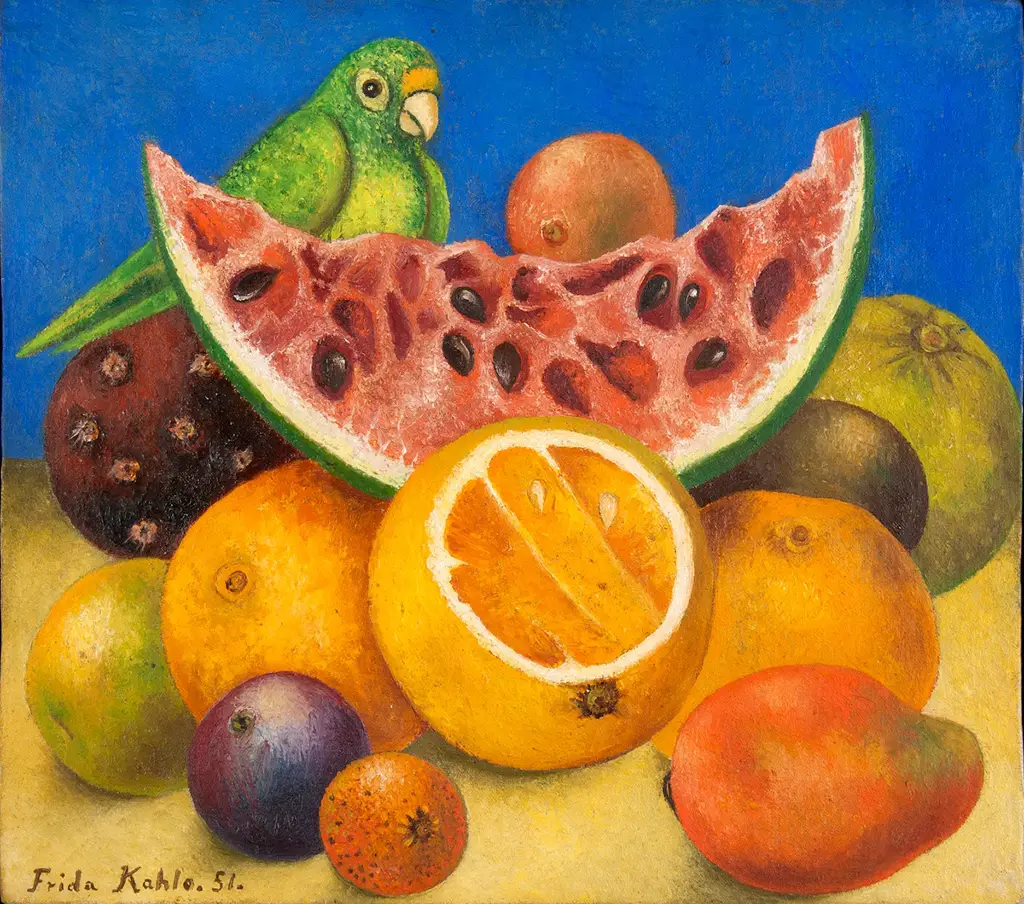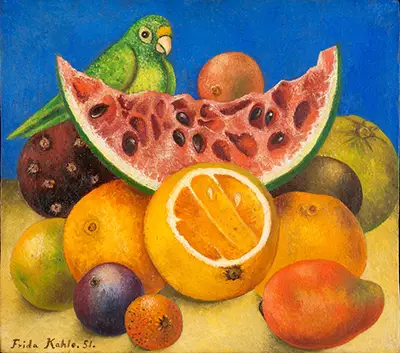She was heavily dependent on pain medication which created a change in the way she painted and the colours she used. The colours in Still Life with Parrot and Fruit are very vivid with bright hues like orange, reds, blues and greens. There is a slice of melon at the centre with seeds and an orange that is cut close to the top with the flesh and seeds exposed. These form the focal point of the entire painting.
The parrot is also part of the focal point in the centre, located behind the left side of the melon and looking straight at the viewer. It looks as if the parrot was eating the watermelon and inviting the viewer to do the same or making sure no one eats it. The medium used to paint Still Life with Parrot and Fruit was oil on canvas. This can explain the richness of the painting and why the colours are so vivid. The texture of the artwork appears to be very smooth which adds to its richness. The blue hue in the first half of the painting is saturated and is complementary to the abundance of orange that is found in the majority of the fruit on the table.
There is a path created for the cut orange between the mango and the fruit directly to the left of it. This is an interesting form of still life because the parrot is not a creature that stays still. Still Life with Parrot and Fruit is part of the collections at the Harry Ransom Center, a humanities research library and museum at The University of Texas at Austin in The United States. It was originally painted in Mexico and the physical dimensions of the painting are 25.7 x 28.2 cm or 10 x 11 inches. This painting was originally given to Nickolas Muray and his family as a gift.


